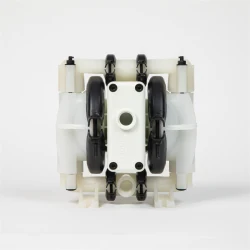Key Characteristics and Types of Positive Displacement Pumps
2024-06-07
Positive displacement pumps are a type of pump that operates by trapping a fixed volume of fluid and then forcing it into the discharge pipe. Unlike centrifugal pumps, which rely on centrifugal force to move fluid, positive displacement pumps provide a constant flow rate regardless of changes in pressure.
Here are some key characteristics and types of positive displacement pumps:
1. Types of Positive Displacement Pumps:
- Reciprocating Pumps: Reciprocating pumps use a piston or plunger to create a reciprocating (back-and-forth) motion that draws fluid into a cylinder on the suction stroke and then forces it out on the discharge stroke. Examples include piston pumps and diaphragm pumps.
- Rotary Pumps: Rotary pumps operate by using rotating elements to trap and move fluid. Examples include gear pumps, screw pumps, vane pumps, and peristaltic pumps.
- Lobe Pumps: Lobe pumps use lobed rotors to move fluid through the pump. They are often used in applications requiring gentle handling of shear-sensitive fluids.
- Progressive Cavity Pumps: Progressive cavity pumps consist of a helical rotor rotating within a stator, creating a progressing cavity that moves fluid from the suction side to the discharge side.
- Gear Pumps: Gear pumps use meshing gears to trap and move fluid from the suction side to the discharge side. They are simple in design and are commonly used in automotive applications, hydraulic systems, and industrial processes.
2. Constant Flow Rate: Positive displacement pumps provide a constant flow rate regardless of changes in pressure or system conditions. This makes them suitable for applications where precise flow control is required.
3. Self-Priming: Many positive displacement pumps are self-priming, meaning they can evacuate air from the suction line and create a vacuum to draw fluid into the pump. This makes them suitable for applications where the suction lift is required or where the pump may be located above the fluid level.
4. High Pressure Capability: Positive displacement pumps are capable of generating high discharge pressures, making them suitable for applications requiring high-pressure pumping, such as hydraulic systems, oil and gas production, and chemical processing.
5. Viscosity Handling: Positive displacement pumps are capable of handling fluids with varying viscosities, from thin liquids to highly viscous fluids. This versatility makes them suitable for a wide range of applications in various industries.
6. Low Shear Operation: Some types of positive displacement pumps, such as peristaltic pumps and lobe pumps, provide gentle handling of shear-sensitive fluids, making them suitable for applications where product integrity is critical.
Positive displacement pumps are widely used in industries such as oil and gas, chemical processing, food and beverage, pharmaceuticals, and wastewater treatment, where precise flow control, high-pressure pumping, and handling of viscous or shear-sensitive fluids are required.



